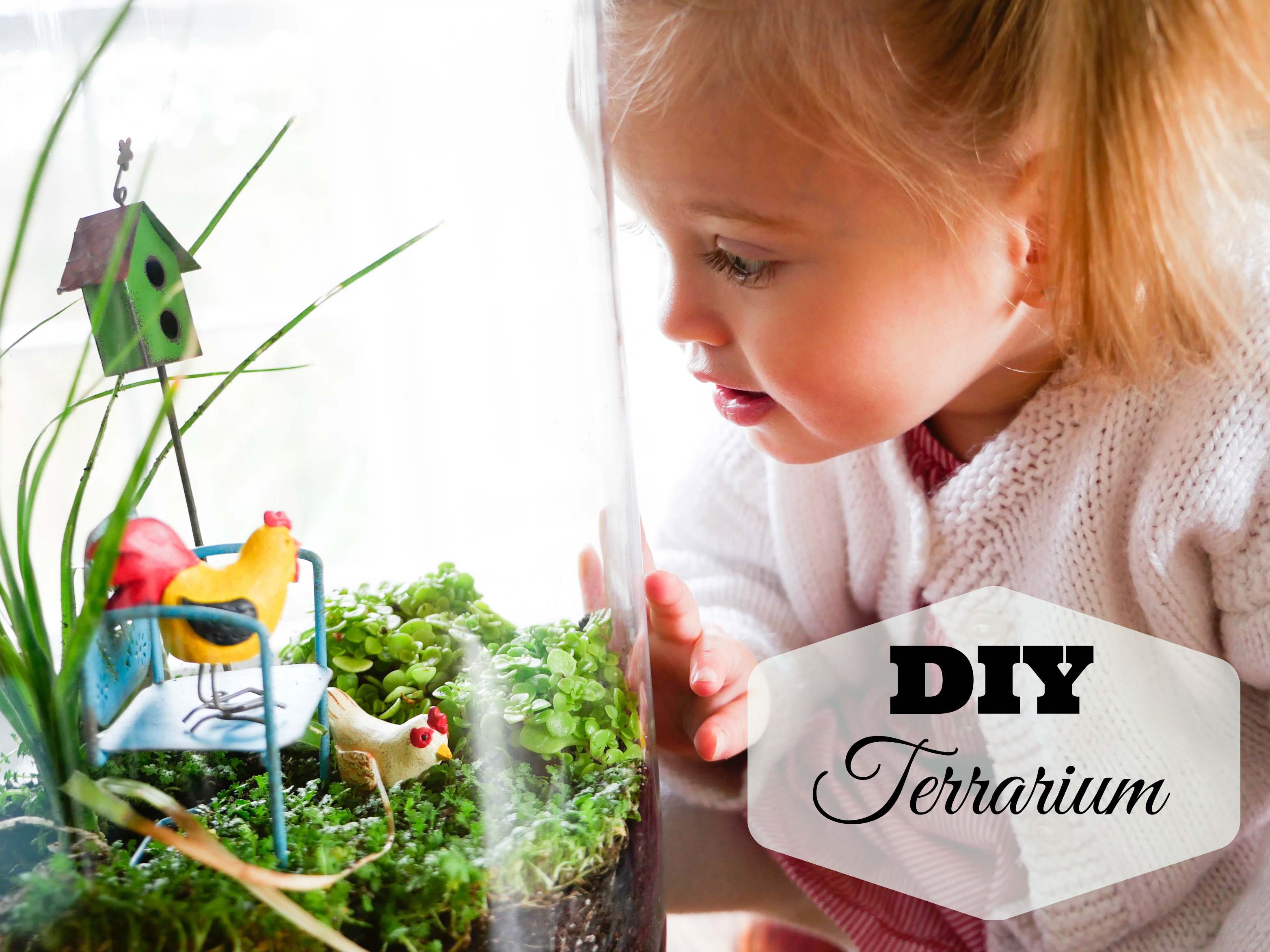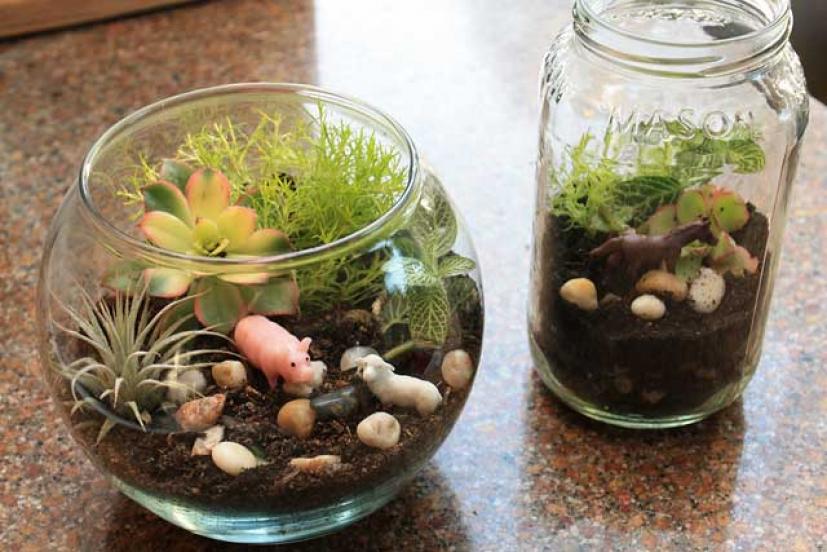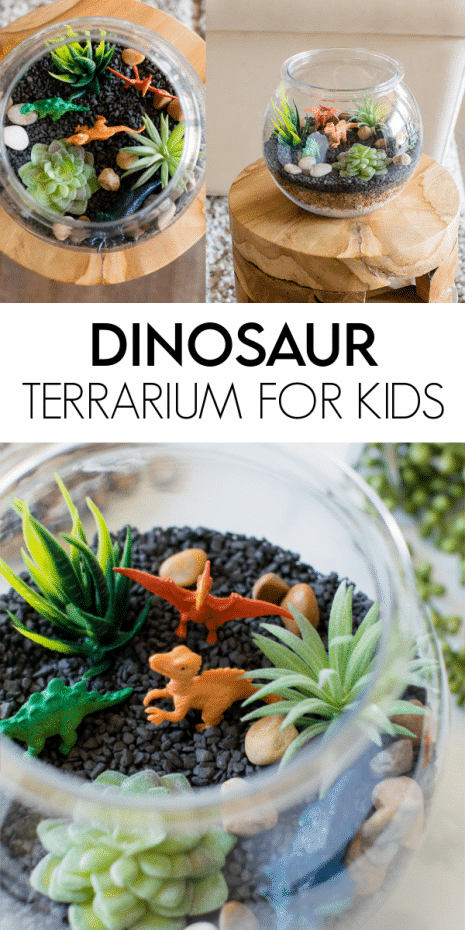Terrariums for kids are miniature gardens inside transparent containers, perfect for teaching children about plants and ecosystems. They are fun, educational, and easy to create.
Terrariums make an excellent hands-on activity for kids, fostering creativity and a love for nature. They provide a controlled environment where children can learn about plant growth, soil types, and water cycles. Building a terrarium involves selecting plants, arranging soil layers, and decorating with small figurines or rocks.
This process helps develop fine motor skills and encourages responsibility as kids tend to their mini-garden. Terrariums can also be a great way to introduce children to concepts like photosynthesis and the water cycle in an engaging, interactive manner. Start your terrarium project today and watch your child’s curiosity grow!

Credit: happilyevaafter.com
Introduction To Terrariums
Terrariums are like tiny gardens in glass containers. They bring a piece of nature indoors. Kids can learn and have fun while creating and caring for them. Let’s explore what terrariums are and why they are great for kids.
What Is A Terrarium?
A terrarium is a small, enclosed garden. It is usually made in a glass container. Inside, you can grow plants and sometimes small creatures. The glass keeps moisture and air inside. This creates a mini-ecosystem. There are two main types:
- Closed Terrariums: These have lids. They create a humid environment.
- Open Terrariums: These do not have lids. They are ideal for dry plants.
Benefits For Kids
Creating and caring for a terrarium has many benefits for kids:
| Benefit | Description |
|---|---|
| Educational | Kids learn about plants, ecosystems, and responsibility. |
| Creativity | They design and decorate their own mini-gardens. |
| Relaxation | Gardening can be a calming activity. |
| Connection to Nature | Kids experience nature even in urban settings. |
Encouraging kids to make terrariums can foster a love for nature. It also helps them develop important skills and habits.

Credit: www.marinmommies.com
Materials Needed
Creating a terrarium is a fun and educational activity for kids. It teaches them about ecosystems and plant growth. Here’s a list of materials you’ll need to get started.
Essential Supplies
First, gather the essential supplies to build your terrarium:
- Glass or plastic container: Choose a clear container with a wide opening.
- Small pebbles: These help with drainage.
- Activated charcoal: This keeps the soil fresh.
- Potting soil: Use soil suitable for small plants.
- Small plants: Select plants that thrive in humid environments.
- Moss: Adds decoration and retains moisture.
- Spoon or small trowel: Useful for placing soil and plants.
Optional Add-ons
To make the terrarium more exciting, consider these optional add-ons:
- Mini figurines: Add tiny animals or characters for fun.
- Colorful sand or stones: Use these for decoration.
- Decorative shells or crystals: Enhance the visual appeal.
- LED lights: Light up the terrarium for a magical touch.
| Essential Supplies | Optional Add-ons |
|---|---|
| Glass or plastic container | Mini figurines |
| Small pebbles | Colorful sand or stones |
| Activated charcoal | Decorative shells or crystals |
| Potting soil | LED lights |
| Small plants | |
| Moss | |
| Spoon or small trowel |
Gather these materials and let your kids’ creativity shine. They will enjoy creating their own mini world!
Choosing The Right Plants
Creating a terrarium with kids can be a fun and educational activity. The key to success lies in choosing the right plants. This ensures the terrarium thrives and remains easy for kids to care for. Below, we’ll explore some kid-friendly plants and tips for caring for the plants.
Kid-friendly Plants
When selecting plants for a terrarium, it’s important to pick ones that are easy to care for and safe for children. Here are a few suggestions:
- Spider Plant: This plant is very hardy and can survive in low light.
- Air Plant: These unique plants do not need soil and require minimal care.
- Succulents: Succulents like jade plants and echeveria are very low-maintenance.
- Ferns: Ferns such as the button fern thrive in humid environments.
Each of these plants is easy to handle and poses no danger to kids. They also add different textures and colors to the terrarium.
Caring For The Plants
Once the plants are chosen, it’s crucial to teach kids how to care for them. Here are some basic tips:
- Watering: Most terrarium plants need watering once a week.
- Light: Place the terrarium in indirect sunlight for optimal growth.
- Humidity: Keep the terrarium covered to maintain humidity levels.
- Cleaning: Wipe the glass with a damp cloth to keep it clear.
By following these simple steps, kids can enjoy watching their plants grow. They will also learn about the responsibility of caring for living things.
| Plant | Watering Needs | Light Requirements |
|---|---|---|
| Spider Plant | Once a week | Low to indirect light |
| Air Plant | Soak once a week | Bright, indirect light |
| Succulents | Once every two weeks | Bright light |
| Ferns | Keep soil moist | Indirect light |
By understanding the specific needs of each plant, kids can ensure their terrarium remains healthy and vibrant.
Step-by-step Guide
Creating a terrarium is a fun and educational activity for kids. This step-by-step guide will make it easy to build your own terrarium. Follow these steps for a beautiful and healthy mini garden.
Preparing The Container
First, choose a clear glass container. It can be a jar, bowl, or even an old fish tank. Clean the container with soap and water. Make sure it is completely dry before starting.
Next, gather the materials you will need. You will need small rocks, activated charcoal, potting soil, and small plants or seeds. You might also want to add some decorative items like small toys or figurines.
Layering The Soil
Start by adding a layer of small rocks to the bottom of the container. This layer helps with drainage. Aim for about one inch of rocks.
On top of the rocks, add a thin layer of activated charcoal. The charcoal helps keep the terrarium fresh by preventing mold and odors.
Next, add a layer of potting soil. The soil should be deep enough for the plants to take root. Three to four inches is usually a good depth.
Now, it’s time to plant! Make small holes in the soil for your plants. Place the plants in the holes and cover their roots with soil. Pat the soil down gently around the plants.
After planting, you can add some decorative items. Small toys or figures can make your terrarium more fun and personalized.
Water the soil lightly. Place the terrarium in a spot with indirect sunlight. Watch your mini garden grow and thrive!
Decorating The Terrarium
Decorating a terrarium can be a fun and creative activity for kids. They can use their imaginations to create a tiny world inside a glass container. This section will help kids add fun elements and personalize the design of their terrariums.
Adding Fun Elements
Adding fun elements makes the terrarium more exciting. Kids can place small toys like dinosaurs, fairies, or animals inside.
- Miniature Figures: Use tiny animals or fairy figurines.
- Colorful Stones: Add vibrant pebbles or gems.
- Small Signs: Make mini signs with fun messages.
- Mini Furniture: Place tiny benches or swings.
These elements turn the terrarium into a magical place. Kids can change the items as they like to keep it interesting.
Personalizing The Design
Personalizing the terrarium makes it unique. Kids can use their favorite colors and themes.
- Paint the Rocks: Use non-toxic paint to color rocks.
- Add Stickers: Place waterproof stickers on the glass.
- Create Paths: Use sand or small stones to make paths.
- Use Glitter: Sprinkle some glitter for sparkle.
These personal touches make the terrarium special. Kids can show their creativity by designing their unique terrarium.
Here is a simple table to summarize:
| Fun Elements | Personalizing Design |
|---|---|
| Miniature Figures | Paint the Rocks |
| Colorful Stones | Add Stickers |
| Small Signs | Create Paths |
| Mini Furniture | Use Glitter |
Decorating and personalizing the terrarium is a fun and rewarding activity for kids. It helps them express their creativity and imagination.
Educational Benefits
Creating a terrarium can be a fun and educational activity for kids. Terrariums provide numerous educational benefits that help children learn about the natural world in an engaging way. They offer hands-on experience and foster a sense of responsibility.
Learning About Ecosystems
Terrariums are miniature ecosystems where plants and small creatures can coexist. Kids can learn about ecosystems by observing how plants grow and interact. This small-scale model helps children understand the interconnectedness of nature. They can see how water, light, and soil work together to sustain life.
| Component | Role in Ecosystem |
|---|---|
| Plants | Produce oxygen and provide food |
| Soil | Holds plants and provides nutrients |
| Water | Essential for plant growth |
By watching a terrarium, kids can learn about photosynthesis and the water cycle. They can see how water evaporates and condenses inside the glass, mimicking natural processes. This visual learning helps solidify concepts taught in school.
Responsibility And Care
Maintaining a terrarium teaches kids about responsibility. They must water the plants and ensure they get enough light. This daily care routine helps develop a sense of commitment. Kids learn that living things depend on them.
- Watering the plants regularly
- Ensuring the terrarium gets light
- Cleaning the glass for better visibility
These tasks are simple yet important. They help children understand the impact of their actions. By taking care of their terrarium, kids learn about consequences and the importance of consistency. This responsibility can extend to other areas of their lives.
Common Mistakes To Avoid
Creating a terrarium for kids is a fun and educational activity. But, certain mistakes can ruin the experience. Here’s a guide to help you avoid common pitfalls.
Overwatering Issues
One of the biggest mistakes is overwatering. Plants in terrariums need less water. Too much water can drown the plants. It can also cause mold and rot.
To avoid overwatering, use a spray bottle. Mist the plants lightly. Check the soil before adding more water. It should be slightly damp, not soggy.
Choosing The Wrong Plants
Choosing the wrong plants can lead to a failed terrarium. Some plants need more light and water. Others need less.
For a successful terrarium, pick low-maintenance plants. Good choices are succulents, ferns, and mosses. These plants adapt well to terrarium conditions.
Here is a table of suitable plants:
| Plant Type | Light Needs | Water Needs |
|---|---|---|
| Succulents | Low | Low |
| Ferns | Medium | Medium |
| Mosses | Low | Low |
Make sure to group plants with similar needs. This ensures they thrive together.

Credit: www.madetobeamomma.com
Long-term Care Tips
Taking care of a terrarium can be a fun and educational activity for kids. Long-term care ensures the plants and animals inside thrive. Here are some easy-to-follow tips to help keep your terrarium healthy and beautiful.
Maintenance Routine
Regular maintenance is key to a thriving terrarium. Follow these simple steps:
- Watering: Check the soil moisture weekly. Water when the top layer feels dry.
- Lighting: Ensure the terrarium gets indirect sunlight. Direct sunlight can be too harsh.
- Cleaning: Wipe the glass clean every two weeks. Use a soft cloth.
- Trimming: Trim dead or overgrown plants monthly. Use small, sharp scissors.
Troubleshooting Problems
Sometimes issues arise in terrariums. Here’s how to solve common problems:
- Yellow Leaves: This may indicate overwatering. Reduce the amount of water.
- Mold Growth: Increase ventilation by opening the lid for a few hours daily.
- Pest Infestation: Remove pests by hand. Use a mild insecticidal soap if needed.
- Foggy Glass: This is often due to high humidity. Open the lid to let some moisture escape.
Keeping a terrarium for kids can be a joyful experience. Regular maintenance and troubleshooting will ensure it remains a healthy, beautiful environment.
Conclusion
Creating a terrarium for kids offers endless fun and educational opportunities. It’s a simple project that nurtures creativity. Kids learn about plants, ecosystems, and responsibility. Plus, it’s a wonderful way to bond and spend quality time together. Give your children the joy of building their own tiny green world.
